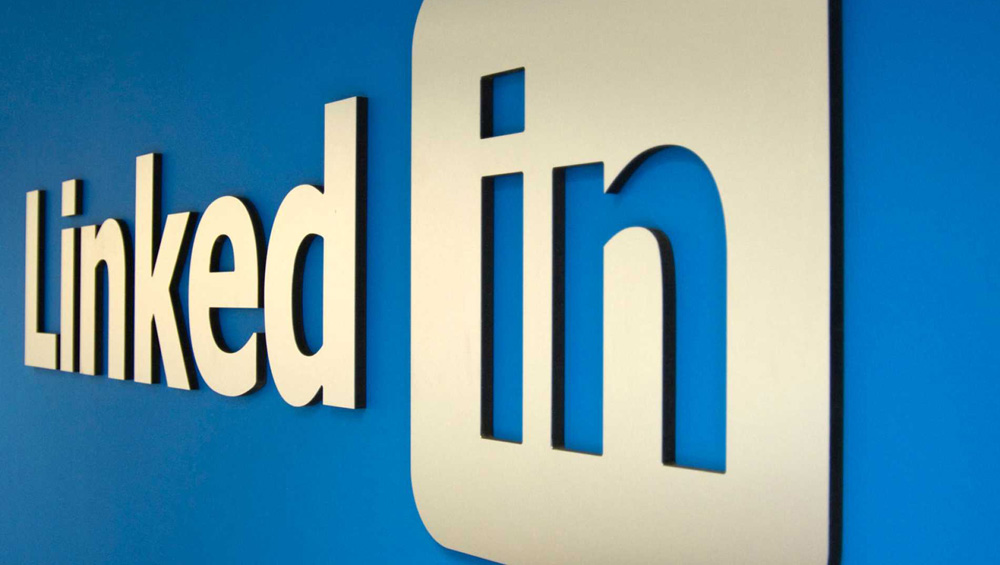
Is LinkedIn An Untapped Resource For TV News?

TV news groups have looked to leverage social media to get more eyes on content and boost brand awareness since the advent of legacy platforms like Facebook and Twitter a decade and a half ago. Lately, more of the focus has been fixed on relatively newer platforms — Instagram, TikTok, Snapchat — because they appeal to younger demographics and, therefore, may prove key contributors to sustainability.
Lost in the shuffle, however, has been LinkedIn.

Kim Wilson (Erica Aitken Photography)
“The old way of thinking, or maybe the stigma that LinkedIn has had, is that it’s just a bunch of job ads,” says Kim Wilson, founder and president of Social News Desk, the Graham Media-owned company offering social media management and audience acquisition tools to newsrooms. “The reality, actually, is there are 15 times more pieces of content [on LinkedIn] that are not job ads than there are pieces of content that are job ads.”
Observing that data point and the Pew Research Center revelation that 28 percent of American adults use LinkedIn — more than Snapchat, TikTok, and even Twitter — the platform could prove particularly helpful to TV newsgroups looking to expand their reach through social media publishing diversification.
So certain that LinkedIn is an untapped resource for its clients, Social News Desk recently launched a tool within its dashboard for LinkedIn posting. The organization also published a LinkedIn best-practices blog post as well.
Tips, from Social News Desk’s Senior Client Success Manager Sarah Loyd, include publishing regularly. Like with other platforms, Loyd also noted on the blog, LinkedIn publishers should attach hashtags to their posts, pushing them into user feeds who engage with the “Discover” section.
Because posting to LinkedIn is an almost identical process to that of Facebook, Wilson says it doesn’t feel as though publishing there is a gratuitous, energy-sucking task added onto an already lengthy to-do list for any TV news worker.
“The only real extra step is a filtering or decision process of, ‘Does this belong on LinkedIn?’” Wilson says.
Stakeholders within individual news organizations are the only ones who can truly answer that question.
“I would encourage newsrooms to try a variety of strategies, but rely [on] your editorial judgment, just like you do with what to put on your news and how well you know your community,” Wilson says. “Don’t overthink it. Put the stuff out there that you think is going to get results and see how it does and adjust from there.”
While posting content with the highest potential for engagement across a given platform should be a primary strategy for any social media user, TV news content might stand a better chance at breaking through on LinkedIn than in other social media universes.

Brendan Gahan
“The algorithm for LinkedIn does a good job of serving out the content to people based off of the relevant terms you’re using,” says Brendan Gahan, partner and chief social officer at Mekanism, an independent creative agency. Because LinkedIn is centered in the professional world, Gahan adds, it’s easier for brands to find their audience there than on a platform like Twitter, which anyone can use for any reason.
“From a reach and relevancy standpoint, [LinkedIn is] pretty powerful,” he says.
Gahan should know. Every day for a year straight he published on LinkedIn, and wrote about the benefits of posting to the platform for Entrepreneur. Among other positives, he indicated in his piece that, on LinkedIn, a brand of just about any sort can “build a strong, tight-knit community that pays dividends in opportunity.”
“It’s definitely shifting from being just a utility to a professional social network,” Gahan says of LinkedIn.
The platform, according to Gahan, is prioritizing video in its feeds. So a TV news team’s assets should do well, Gahan says, and he suggests that teams post them natively to the platform.
LinkedIn also has its own live streaming capabilities that TV newsgroups can explore.
Furthermore, considering the fact that LinkedIn users are professionals, Gahan says it’s home to “a more desirable” audience for TV news organizations — people with higher incomes, on average, and perhaps “people predisposed to the news already.”
“From a targeted audience standpoint it can be incredibly valuable to act as a funnel to reach the type of viewer that you want and that advertisers want,” Gahan says.

Anthony Wright
But given the longtime primary purpose of LinkedIn — connecting job hunters with talent seekers — TV news organizations can still lean into that aspect of it, too, in fresh ways. Anthony Wright, digital director at E.W. Scripps-owned ABC affiliate KERO Bakersfield, Calif., says he and his digital team (of one other person) are posting station news content to LinkedIn with the intention of attracting top-flight candidates looking to break into the TV news industry.
“We really wanted to focus in on our content, the stuff we were producing here locally, so that people would get an idea of what our philosophy is, what our news direction is,” Wright says. “Plus, it also enables us to provide an idea of what Bakersfield as a town is like through some of the stories we are posting.”
(KERO still relies on Facebook and Twitter to drive traffic to the station’s digital assets, Wright says. Its Instagram account, on the other hand, is in place for branding purposes.)
Another motivator for TV news digital teams to consider LinkedIn publishing is the recent announcement that Meta is considering a reduction of funds the company gives to its news partners. A TV news reliance on Facebook for content exposure could dwindle as a result.
Wilson says newsgroups have grappled with the question of “Will Facebook pull the rug out from under us?” for a decade. Regardless, because they rely on the platform for so much exposure, announcements like that one have them perhaps feeling “a little bit vulnerable.”
“If you see some of your traffic is going down from that source then by all means let’s try LinkedIn,” Wilson says. “Let’s try and fill in some of the gap with a place that’s different. And it’s so easy.”
Have these experiments with LinkedIn publishing worked? Is there greater reach? Engagement? ROI?
“To be totally honest, it’s too early to tell,” says Wilson.
At the moment, many of Social News Desk’s clients are figuring out who should oversee LinkedIn posting, giving them access, figuring out what their approach might be and streamlining the workflow. Some newsrooms also have to create LinkedIn accounts for the first time before posting.
Still, Wilson believes data about the platform’s viability will emerge over the course of the next few months. She also wants newsrooms to take advantage of the current landscape. (Poking around the platform, very few newsgroups are posting to LinkedIn with any consistency. Of the larger corporations, ABC News seems to be the clubhouse leader, publishing as often as a half-dozen times a day, though CBS News has upped its game of late.)
“Whenever there’s a vacuum, if you’re first to enter that market, you are going to get the biggest share,” Wilson says. “No time like the present. The opportunity to get results is going to be excellent right now because there is so little competition.”




































Comments (0)